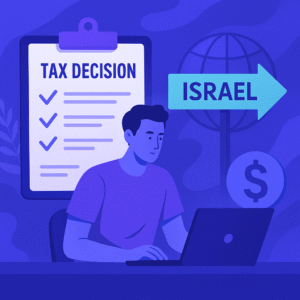How to withdraw money from a company
Money from the company
The purpose of a limited liability company’s existence is to increase the profits of its shareholders. However, the question arises of how a shareholder can actually withdraw money from their own company. This article reviews the various ways a shareholder can withdraw money from the company. A separate article on wallet companies can be found at the link – Wallet Company.
Dividend distribution
It should be noted that a dividend is a payment the company transfers to its shareholders. It is derived from the company’s surplus (profits) and is distributed proportionally to the holding ratio (pro-rata). Additionally, dividends are usually in the form of cash but can also be in other assets (in-kind dividends).
Dividend distribution must pass two tests:
- The Profit Test – The company must have a positive balance after distribution (if it is negative, profits from the last two years can be distributed if profits have accumulated). However, if this test is not met, one can petition the District Court for approval of the distribution.
- The Solvency Test – The purpose of this test is to ensure that the dividend distribution does not affect the company’s ability to meet its obligations.
It’s important to note that when it comes to a public company, the distribution of dividends requires the approval of the board of directors and the general assembly. Additionally, the distribution of dividends usually reduces the stock’s value on the stock market at the time of distribution by the value of the amount distributed. The distribution of dividends in a public company typically depends on the company’s declared dividend distribution policy.
Owner Withdrawals from the Company – Section 3(9) of the Ordinance:
In the past, to avoid paying tax on dividend withdrawals, company owners would create a shareholder debt surplus by receiving a “loan” from their owned company without any genuine intention of repaying it. This action was the basis for many assessments made by the Tax Authority, which reclassified the loan as a dividend.
Amendment 235 to the Income Tax Ordinance addressed three main topics: one of them deals with withdrawing money by creating a significant shareholder debt surplus. Section 3(9), legislated in this amendment, determined that the withdrawal would be classified as either a dividend, employment income, or a benefit depending on the circumstances of the withdrawal. Therefore, tax will be imposed according to its classification if the shareholder does not repay the withdrawal funds by the end of the following year.
To clarify issues related to the implementation of the section, the Tax Authority published Income Tax Circular 07/2017 on the taxation of significant shareholders due to withdrawals from a company.
Withdrawal is defined as any debt to the company created by a significant shareholder or their relative. Withdrawing money from the company is any withdrawal for the benefit of one of its shareholders.
Generally, any debt or withdrawal by a shareholder from the company will be considered a loan and requires documentation, a loan agreement, and more. This rule applies to cash, debt, loan agreements, securities, and any other guarantee the company provides for the benefit of the shareholder. Also, any asset provided by the company for the shareholder’s benefit will be considered a withdrawal from the company. This is only if the shareholder is an individual and if the asset’s primary use is for the private benefit of the shareholder. The included assets are apartments, art objects, jewelry, aircraft, and vessels. Additionally, an indirect withdrawal will also be considered a withdrawal (withdrawal of money from a subsidiary company and not from the parent company).
As mentioned, a withdrawal is considered a loan and accumulates interest that is subject to tax on the amounts. A withdrawal without an agreement or not repaid on time will be taxed according to the income classification.
The Tax Authority also published a specific form for reporting such a withdrawal – Form 1350, which is an appendix to the annual report.
Salary expenses and management fees
There are two additional ways in which the company can classify the transfer of money to a controlling owner as a business expense.
In cases where the company grants a loan to the controlling owner, the income tax will not recognize the loan as a loss resulting from business activity. However, the company can argue that it is a matter of salary expenses. This is because instead of increasing the salary of the controlling owner, it provided a loan. Since the controlling owner wears two hats in the company (controlling owner and employee), the company will need to convince the income tax that the loan was given to the controlling owner under his hat as an employee. Also, that the terms of the transaction are not different from the terms of transactions of other employees.
Additionally, in cases where the controlling owner of the company provides services to the company, the company can declare the money transferred to the controlling owner as management fee expenses, provided that several conditions are met.
- The management transaction stems from a genuine need.
- There is documentation of the transaction.
- The compensation is reasonable in relation to the service.
Buyback of shares
This approach addresses the situation where a company buys shares from its shareholders. The methods for a company’s self-purchase of shares are outlined in the Companies Law and include several conditions that must be met for the purchase to be executed. Historically, the leading case on self-purchase was the Baranovsky case. However, in 2023, a contradictory ruling was issued by the District Court, which was later overturned by the Supreme Court.
As of now, a buback of shares is considered a dividend for all shareholders (under the two-transaction approach), based on the economic rationale that a company cannot select its shareholders. Furthermore, the fact that a shareholder holds a higher percentage of the company after the transaction creates taxable value. Simplifying the dispute, the process can be viewed as one where, in essence, the remaining shareholders are purchasing the shares of the departing shareholder, financing the transaction through the company. This is why the tax authorities will impose dividend tax on self-purchase transaction.



